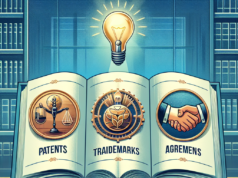
In an increasingly digital world, software piracy remains a pervasive issue that undermines the integrity of the technology industry. Defined as the unauthorized use, reproduction, or distribution of software, piracy not only affects developers and companies but also has far-reaching consequences for consumers and the global economy. This article delves into the multifaceted nature of software piracy, exploring its economic impact, legal ramifications, ethical considerations, hidden costs, and potential strategies for combating this ongoing challenge.
Understanding Software Piracy: Definition and Scope of the Issue
Software piracy encompasses a range of illegal activities, including the unauthorized copying, distribution, and installation of software applications. It can manifest in various forms, such as counterfeit software, keygens, and torrent downloads. The scope of the issue is vast, with estimates suggesting that software piracy rates hover around 37% globally, according to the Business Software Alliance (BSA). This statistic highlights the widespread nature of the problem, affecting both developed and developing nations. As technology continues to evolve, so too do the methods employed by pirates, making it increasingly difficult for software companies to protect their intellectual property.
The Economic Impact of Software Piracy on the Global Market
The economic ramifications of software piracy are profound, with the global market suffering significant losses each year. According to a report by the BSA, the software industry lost approximately $46.3 billion in 2021 due to piracy. This loss not only affects software developers and publishers but also has a cascading effect on the economy at large. Jobs are lost, tax revenues decline, and innovation is stifled as companies struggle to recoup their investments. Furthermore, the prevalence of pirated software can lead to a devaluation of legitimate products, creating an uneven playing field that undermines fair competition and discourages new entrants into the market.
Legal Consequences: The Risks of Engaging in Software Piracy
Engaging in software piracy carries significant legal risks for individuals and organizations alike. Copyright infringement is a serious offense that can result in hefty fines, legal action, and even imprisonment in severe cases. In many jurisdictions, software companies actively pursue legal recourse against offenders, leading to costly litigation and reputational damage. Additionally, businesses that utilize pirated software may face penalties from regulatory bodies, which can further exacerbate their financial woes. The legal landscape surrounding software piracy is complex, and the consequences of non-compliance can be dire, making it imperative for users to understand the risks involved.
Ethical Considerations: The Moral Implications of Software Theft
Beyond the legal ramifications, software piracy raises significant ethical questions. The act of stealing software undermines the hard work and creativity of developers who invest time and resources into creating innovative products. It perpetuates a culture of entitlement, where individuals and organizations feel justified in taking what does not belong to them. This mindset not only harms the software industry but also erodes trust within the broader business community. Ethical considerations extend to consumers as well, who may unknowingly support piracy by using counterfeit software, thereby contributing to a cycle of theft that ultimately harms everyone involved.
Hidden Costs: How Software Piracy Affects Developers and Consumers
The hidden costs of software piracy extend beyond immediate financial losses. For developers, piracy can lead to reduced funding for future projects, as revenue streams are compromised. This, in turn, stifles innovation and limits the development of new technologies that could benefit consumers. Additionally, consumers who use pirated software often face risks such as malware infections, lack of customer support, and limited access to updates. These hidden costs can result in a subpar user experience, ultimately diminishing the value of the software and leading to dissatisfaction among users. The cycle of piracy thus creates a detrimental environment for both developers and consumers.
Strategies for Combating Software Piracy: Solutions and Best Practices
To effectively combat software piracy, a multifaceted approach is necessary. Companies can implement robust licensing systems and employ digital rights management (DRM) technologies to protect their intellectual property. Education and awareness campaigns are also crucial in informing consumers about the risks associated with pirated software. Collaboration between governments, industry stakeholders, and law enforcement can lead to more effective enforcement of copyright laws and the prosecution of offenders. Additionally, offering affordable pricing models and subscription services can provide legitimate alternatives to piracy, making it easier for consumers to access software legally. By adopting these strategies, the software industry can work towards reducing piracy rates and fostering a more sustainable digital ecosystem.
In conclusion, software piracy is a complex issue with far-reaching implications for the global market, legal systems, and ethical standards. Understanding the definition and scope of piracy, along with its economic impact and hidden costs, is essential for addressing this pervasive problem. By recognizing the legal risks and ethical considerations associated with software theft, stakeholders can work together to develop effective strategies for combating piracy. Ultimately, fostering a culture of respect for intellectual property will benefit not only developers and companies but also consumers, paving the way for a more innovative and equitable digital landscape.



























